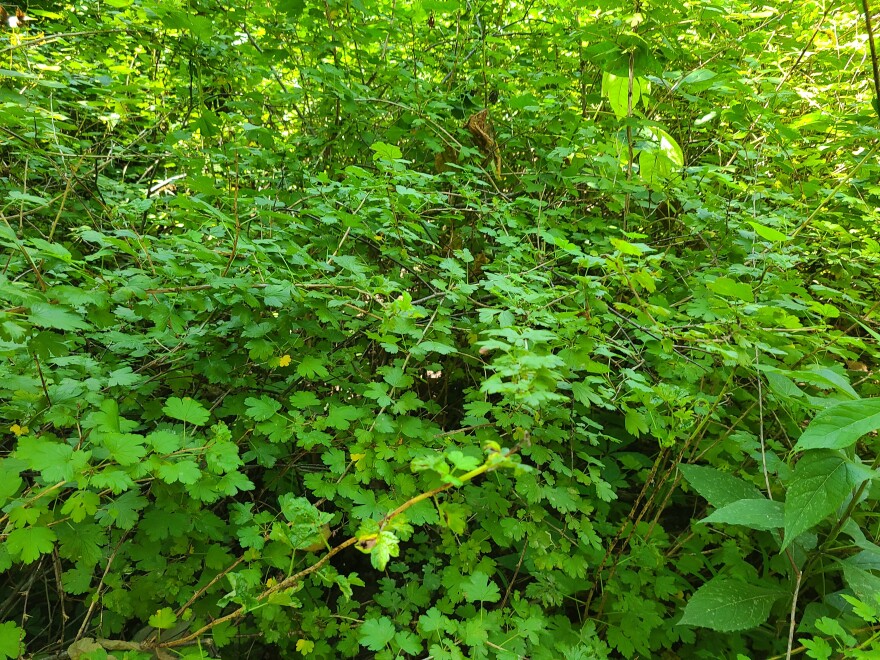A patch of Missouri gooseberry at Sharon Woods is being handled with care while construction crews mere yards away move dirt and reconstruct the park's lake.
"Missouri gooseberry is an interesting plant. It is , and it's a rare plant across the entire state and for us in particular," says Daniel Kovar, conservation biologist with Great Parks. "It's only found in a couple of counties here in southwest Ohio. Even within Hamilton County, it's pretty rare. So it's a special plant for us."
Missouri gooseberry is a deciduous shrub that flowers in April and May, producing fruit in June through September. The Missouri Department of Conservation notes it has prickly stems and edible fruit for those brave enough "to collect its tart, tasty fruits to make pies, jams, and jellies."
Kovar says the Sharon Woods patch was discovered by a volunteer "many years ago." That volunteer also is a botanist who's been helping to monitor the plant ever since.

How the plant ended up near the northern side of Sharon Lake, Kovar says, is a mystery.
"Nobody really knows how it got here. It has probably been here for a very, very long time, and it's just not very common. It likes more light than area, so shading from invasive species and even from native species, can be a threat to it," Kovar adds.
Great Parks consulted with the chief botanist with the Ohio Department of Natural Resources, Division of Natural Areas and Preserves before beginning construction. Kovar says he helped the park determine the extent of the plant's population, and make a protection plan. Orange fencing was put up around the plant to make sure construction workers know not to disrupt it as much as possible.

Kovar says another mystery about this Missouri gooseberry is that while it's a prolific flowerer, "this particular population rarely, if ever, produces berries, [and] no one knows exactly why."
"The population, in other respects, looks healthy. It seems to be vigorous. It doesn't seem to be shrinking, but it just doesn't produce a lot of berries. [We're] not sure if the conditions aren't right, or it could be any number of reasons, but yeah, we would love to see it produce berries someday."
While the plant hasn't been spotted elsewhere in the park, Kovar says they're always on the lookout for it and he wouldn't be surprised if it's hiding somewhere.
What nice trees you have
Besides protecting the Missouri gooseberry, Kovar says Great Parks is also keeping an eye on a stand of old woods on the east side of the lake, near where the walking trail is being rerouted.
"It's a really special, very intact, mature woods with lots of wildflowers and other diversity that, if you weren't careful, you could disturb that with construction," he adds. "We're working to avoid that."
To that extent, he says the planning process has involved lots of coordination between the Natural Areas and Planning departments.
The lake and trail work is slated to wrap up in late fall of 2025.
Read more:



